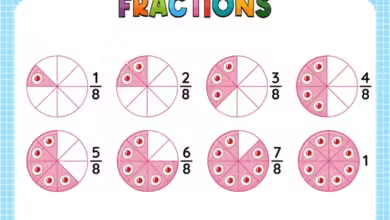Lies of p had no indicators for what was parriable

Lies of P: Understanding the Lack of Parrying Indicators
The world of video games is often marked by intricately designed mechanics that elevate player engagement and enjoyment. From intricate storyline narration to stunning graphics and fluid gameplay, developers strive to create experiences that keep players returning for more. One such game that has sparked interest and conversation is “Lies of P,” an action RPG inspired by the timeless tale of Pinocchio. However, a notable aspect of this game has drawn both intrigue and criticism: the lack of indicators for parrying enemy attacks. In this blog post, we’ll delve deeper into the implications of this game design choice, how it plays into the overall gaming experience, and what it means for player engagement.
What is Parrying in Video Games?
Before we explore the specific implications in “Lies of P,” it’s essential to understand the concept of parrying in action games. Parrying is a defensive maneuver that allows players to deflect an incoming attack from an enemy, usually timed perfectly, leading to an opening for a counterattack. It’s a mechanic that has been successfully incorporated into various influential titles, such as “Dark Souls,” “Bloodborne,” and “Sekiro: Shadows Die Twice.”
In most games that feature parrying mechanisms, players often receive visual or audio indicators that signify when they can successfully time their parries. This feedback is crucial for player learning and mastery, helping them understand the nuances of timing, positioning, and attack patterns. So, what happens when this guidance is absent?
The Absence of Parrying Indicators in Lies of P
Lies of P diverges from conventional practices by omitting indicators for parrying, which leaves players to decipher this complex maneuver largely through trial and error. The decision to exclude such visual feedback ignites several key considerations:
1. Increased Difficulty and Learning Curve
One of the most immediate effects of lacking parrying indicators is the steep learning curve it creates for players. Skill-based games thrive on the challenge of mastering difficult mechanics. However, without any indication of when an enemy is about to attack, players may find themselves frustrated and overwhelmed. This can lead to a sense of satisfaction but can also deter players less accustomed to the genre.
As players engage with the mechanics, they may feel pressured to identify enemy tells or attack animations instinctively. While this can cultivate a need for observation and adaptation, it inevitably also poses larger challenges in terms of accessibility. There’s a narrow subset of players who relish this level of difficulty, while many others may feel alienated and discouraged.
2. Emphasis on Player Skill and Intuition
The lack of parrying indicators in “Lies of P” emphasizes the importance of player skill and intuition. Players must acclimate themselves to their surroundings and develop an acute sense of timing to survive encounters. This type of design choice can foster a deeper connection with the game, as the player’s skills directly impact their success. It transforms each encounter into a tense battle, rewarding players who can hone their instincts and learn from their experiences.
The loop of failure and success is amplified as players learn to trust their instincts, exploit enemy attack patterns, and develop a sense of rhythm in combat. In this way, the absence of explicit indicators can be celebrated as a design choice that challenges players to elevate their gameplay.
3. Pacing and Flow of Combat
Combat pacing in action RPGs is paramount, as it directly correlates with how immersive and exhilarating the experience feels. The absence of symbols or indicators can lead to a faster, more frenetic pace. Players are perpetually on their toes, hunting for openings and reacting to the actions of their foes. This can result in gripping encounters where tension runs high, contributing to the overall thrill of battle.
However, it can also create moments of confusion or frustration, especially in scenarios with multiple enemies. Each character in “Lies of P” has distinct behavior patterns, and without indicators, players may struggle to keep track of attacks, leading to missteps and, subsequently, failures.
4. Narrative and Thematic Implications
Beyond the gameplay mechanics, the lack of parrying indicators can tie into the overarching themes and narrative of “Lies of P.” Drawing inspiration from the tale of Pinocchio, the game explores themes of deception, choice, and morality. A world where players must rely on their intuition mirrors the moral ambiguity faced by the titular character. Just as Pinocchio navigates a treacherous world filled with lies, players must traverse a perilous landscape, drawing on personal skill and instincts to forge ahead.
This thematic resonance adds an emotional depth to the choice-driven gameplay, echoing the issues of trust and perception present in the narrative itself. In this way, the absence of parrying indicators transcends mere game mechanics, intertwining with the game’s philosophical underpinnings.
5. Community and Player Growth
The challenge presented by the absence of parry indicators can foster a sense of community among players. As gamers share their experiences, tips, and strategies, a culture of collaboration and growth can emerge. Platforms for discussion, guides, or video tutorials turn into resources where players collectively work to unravel the complexities of the game. This shared journey can strengthen player engagement and contribute to a thriving gaming community.
Conclusion: A Bold Design Aesthetic
In conclusion, the decision to forgo parrying indicators in “Lies of P” evokes mixed opinions but ultimately serves a larger purpose. It challenges players to enhance their skills, emphasizes the importance of intuition, cultivates an immersive combat experience, aligns with the game’s narrative themes, and creates an engaged community. While some players may find this design choice daunting or off-putting, others will relish the opportunity to dive into a game that rewards mastery, instinct, and resourcefulness.
Like any innovative design choice, it may polarize opinions, but it’s imperative to consider the risks and rewards that come with such decisions in the gaming landscape. “Lies of P” exemplifies how bold design choices can both provoke discourse and push narrative and gameplay boundaries. As players continue to explore this neo-noir world inspired by a classic fable, they are reminded that mastery comes with both perseverance and an adventurous spirit.



